|
We recently played our first face to face game of Bolt Action since the Covid outbreak began. It was a tense game, only decided in the final turn. We used the Operation Jupiter scenario from the D-Day British and Canadian campaign book. Dan took the German defenders while Harry led the British, with a 10% points advantage. The British had a guaranteed preliminary bombardment with extra pinning power, to reflect the contribution of nearby naval guns. The scenario required Harry to get troops into the German defence zone, while Dan’s victory points could only come from killing enemy units. The British were a regular infantry platoon with a medium mortar, MMG in Bren carrier and Sherman in support, while the Germans also had a regular platoon, supported by a Command halftrack with light AT gun and a medium mortar. There were buildings in the centre of the table and scattered woods. Dan set up two squads, the Lieutenant, MMG, sniper and Mortar spotter in the buildings in the centre. He placed a third squad in woods on the right, with the mortar behind. His half track was in reserve. Harry’s preliminary bombardment was made even more effective by the additional pin on each unit required by the scenario (those naval guns!). The only casualty, however, was Dan’s medic, to Harry’s profuse apologies. The British arrived in two waves. Nobody came on in the centre; a couple of small teams arrived on the left wing; but the majority of units, including Sherman and Bren carrier with MMG team, arrived on the British right, in a bid to reach the German rear zone before Dan could redeploy his firepower. The plan very nearly worked. Dan’s reactions were slowed by having to roll off pins from the preliminary bombardment, but he was able to shift one squad left and brought his half track on facing the main British attack. The half track was able to knock out the Bren carrier, taking an MMG crewman with it, but was promptly destroyed by the Sherman. A shame for Dan but great narrative! Harry’s FAO called in an artillery barrage against the main German position but this fell long and plastered an empty field. In mid-game, the British right moved steadily forward, sparring with one German squad and the MG42 in the centre. Meanwhile Dan’s right went hunting for victory points. As he gained more VPs for destroying enemy units than Harry, it was cost effective for him to try to mop up the small teams on the British left. The end game saw a bid by Harry to get enough units into the German rear to beat Dan’s VP tally. This involved crossing open ground covered by German fields of fire. Crucially, in the final turn one unit stopped just short of the zone while another failed to move, being unable to shake off its pins from the enemy crossfire. Had these units made it over the line, Harry would have won. Instead, the day went to Dan.
The game reminded me why Bolt Action is such great fun to play. There were several nail-biting moments, hanging on the sequence of the order dice draw or critical initiative tests. There were no interruptions to check the rules and no arguments over interpretation. It was a fast paced, entertaining game that reached a clear conclusion in an evening. And when the players bring Brew Dog and crisps, that makes for a perfect evening.
1 Comment
Two weekends ago I spent a happy Saturday at Warfare 2021, held this year at Ascot racecourse. It was a good venue and so great to be at a wargame show again. It was particularly fun browsing the Great Escape Games, Warbases and Caliver Books stalls. I also enjoyed the Extraordinary Laser Company's display of pre-printed mdf buildings, which I hadn't seen before. Ever ready to add to the 28mm terrain collection, I picked up the XLS Garage from their Urban Decay range for £15. I don’t play post-apocalypse-dystopian nightmare games (apart of course from Zombicide - who can resist chainsaws and rollerskates?) but had in mind to adapt the model to make a 1940s industrial unit for Bolt Action. First, take your Bits BoxThe model has a big footprint and could be a good centrepiece for a table layout. I decided to keep it as a garage, but dialled back in time to a small French town in 1944. The makeover involved the following steps:
I’m very pleased with the final model and really impressed by the quality of XLC’s products. The pre-colouring is great and construction is dead easy. I’m now looking through the range for other candidates for a 40s makeover. Oh, and I’m tempted by a new dice tower.
I was mildly disappointed to learn that Warfare will not be at Ascot next year, as it was such an impressive venue. However Reading Wargames Association have explained that Ascot hiked its booking fee for next year by 50%, which seems downright cheeky. So Warfare 2022 will be held in Farnborough instead. I plan to be there. I have been asked if I would upload the player briefings that we used for the Shenandoah Campaign that we played twice during the Spring and summer lockdown. I have added these at American Civil War scenarios.
In November we started another campaign, based on the activities of a unit of French Maquis in the run-up to D Day. As we are still unable to meet up, I tried to make this more of a narrative story, without the tabletop encounters that feature in most wargame campaigns. Inspiration for the storylines came from the excellent book, "Forgotten Voices of the Secret War". The spirit of the game is intended to be a little tongue in cheek and neither side is allowed to contemplate atrocities. Not as silly as the UK TV comedy 'Allo, 'Allo but not far off. The campaign started well, with a clever German player intercepting an arms drop in the first phase. One maquis player kidnapped a collaborationist mayor's dog (Fritzy), which became the new mascot of his group. A group of escaped Allied airmen was spirited out of the region under the noses of the Germans and a radio interception unit was shot up in an ambush. After the chance discovery of an arms cache, the Germans laid a trap which wiped out a maquis section. So far, so satisfying. Unfortunately real life then intervened and I had to suspend the campaign, as my father had fallen seriously ill. The players were very understanding. Sadly, my dad passed away shortly before Christmas and there is a lot of administration associated with his estate. I am not sure when I will have the head space to get back to the campaign and when I do, the players may decide that the moment has passed. I would quite understand. But the exercise has been fun and if this game is abandoned, I'd like to try again in a few months. The map and campaign rules are at WW2 Maquis campaign. On 16 January Spencer and I played a game of Chain of Command. I am still learning the ropes but Spencer did a great job helping me to address the subtleties of the game. The scenario was loosely based on a German counter attack during Market Garden, with Spencer’s elite US airborne in a built up area responding to an assault by my reinforced platoon of regular grenadiers, with Panther support. His morale should by rights have been much higher than mine but the dice rolls left him with 9 and me with 8. The 6x4 foot table had a street going lengthways down the middle, with houses and ruins on either side and a T junction at one end. Most of the scenery was mine but Spencer brought a lovely lot of rubble, some home made but most from Charlie Foxtrot. The patrol phase saw each of us trying to gain ground around the other’s right. I was quite happy with the outcome as I think I finally realised how important it is to get patrol markers out in front of the desired jump off points. On the first turn, Spencer deployed a squad and senior leader on his right. He placed an MMG in rubble and the balance of GIs going tactical in the open, in an early bid to take my left-hand Jump-off Point which was behind his right rear. In my turn I deployed a grenadier squad on this JoP and fired at the Airborne in the open. Some very lucky rolls put a lot of shock on the paras and Spencer decided to pull his squad back behind a wall. Unfortunately for him, he rolled low for movement which meant his squad could only retreat to the wall and had to stay on the German side of it for another turn. I brought on an MG42 and a Panther to lay down concentric fire on the Airborne squad. The Yanks shook off the resulting shock, got over the wall and returned fire. The duel between my regulars and the smaller number of Spencer’s elites was surprisingly balanced, but my original squad’s losses rose and it became pinned, with its junior leader first wounded,then killed. My morale by now had dropped to 5. However, Spencer’s losses also gradually rose and he decided he wouldn’t be able to break the pinned squad before his own losses went critical. Concluding this could only end badly, Spencer withdrew his squad out of sight behind the central building Meanwhile, in the centre, I brought in my other two squads, placing one in a ruin facing forward and the other behind them and facing right. Spencer deployed a sniper who started nibbling away at the first of these squads, then he brought in another Airborne squad and senior leader on my right flank. As these troops advanced, Spencer brought his original squad round from behind the building to provide supporting fire. Thus far, the game had been going Spencer’s way, with his morale still intact and mine down by 3 points. But I had been rolling lots of 5s and found myself with two Chain of Command dice. Spencer sent his left hand squad to assault my right flank, which I interrupted with a CoC die. Spencer rolled low for movement and failed to make it into cover. I laid more fire into the advancing Paras, who lost men and some morale points to bad stuff but were still grinding forward. I used the other CoC die to interrupt them again but they still kept coming. Then, I rolled three 6s and was finally able to break Spencer’s left and bring his morale to zero. Game over. That was fun. Really fun. I cannot gloat as Spencer was most generous in helping me to work out my options and reminding me of the significance of the end of turn. The game had a strong narrative feel and I came across some new and interesting rules wrinkles that didn’t crop up in my first two games.
I was happyish with the table but have decided to buy an urban game mat, as the green high street just looked wrong! I am thinking I would then add green spaces back by making some back gardens and placing these as necessary. I also need more rubble and more walls. Time for another chat with Mr Foxtrot. Last Thursday we held the “Matt Pendle Farewell Commemorative Bolt Action Battlegame”. After four years of happy gaming, Matt is inexplicably moving away. He said something about jobs, wives and quality of life and I wish him well, but the simple fact is that a splendid opponent is leaving the area. We have played various periods and rules since 2015 but as Matt, Ian and I started out on Bolt Action together, it seemed fitting to return to BA for our final encounter. We were joined by Dan, a player of various games including Star Wars Legions and RPGs. Having watched a Youtube tutorial beforehand on Bolt Action basics, Dan picked up the rules remarkably quickly. We played a 1000 point game with D Day US versus Late War Germans. I wanted a suitably heroic and memorable game so adapted the Hill defence scenario from Battleground Europe, replacing the defending Poles in the original with Matt’s Americans and transposing the setting to operation Cobra. The briefing is set out below. “Last Stand on Hill TW20 It is the third day of Operation Cobra, the US breakout from the Cotentin Peninsula. General Bradley’s First Army has pierced the German’s Western flank and is advancing south and eastwards into the interior. If the US armour can break out of the bocage country, the German forces in Normandy face encirclement and annihilation. Aware of the stakes, the Germans are throwing everything they have against the neck of the American advance, aiming to cut off the spearhead from its crucial supplies. The corridor opened by the assault is narrow. While the tankers race ahead, it is down to the long-suffering GI to keep that corridor open. Hill TW20 is already behind the US spearhead. It overlooks a key road along which the gasoline and ammunition must flow. It is held by Major Matt “Hedgehog” Pendle and his hard-bitten platoon of veterans. Their task is to hold the hill at all costs. Approaching from the East is a scratch force of German grenadiers, as determined to take Hill TW20 as Matt’s Marauders are to hold it. Their commander, Hauptmann Rudolf von Rotthund, peers at the hill through his binoculars and plans his assault. He is confident of success: what Ami can resist the power of his new dice tower?” Matt set his force up on the hill, minus a half track with infantry section in reserve. He was allowed to dig in his infantry, which he did on his left and centre. Dan and I shared the Germans between us. Matt had a pretty clear killing ground to his front so we agreed that we would try a pincer, Dan on the left and I on the right. How did the game play? Well, I did say I wanted it to be memorable. The first scene unfolded on the German left/US right, as Dan set out to dislodge a US squad behind a row of bocage. This started well, with several useful pins falling on the US squad. Matt regained the initiative with a direct medium mortar hit in its first round, followed by a bazooka taking out Dan’s command halftrack. In return, Dan achieved a first-time direct hit with his medium mortar and started to filter his command squad across to the US side of the bocage. So far, honours were about even. At this point, Matt pulled a very clever turnaround. At the end of one turn he rallied off all of the pins on his right hand squad. When he then drew the first order die of the next turn, he sent the rallied squad smack into Dan’s command squad and wiped it out. Shortly after, Matt’s halftrack arrived and joined in the destruction. From that point on, Dan’s wing was doomed, even with the arrival of a German section from reserve. On the German right, meanwhile, I was footling around behind a hedge, swapping pins with Matt’s MMG and left hand squad in foxholes. Matt shifted his central squad around his left-rear, overrunning as he did so a sniper team that hadn’t even set up for business yet. This was getting embarrassing. With Matt’s encircling squad arriving to my front, I no longer had cover from enemy fire and suffered the consequences. The rest was a blur: some nasty close combat which went in US favour, a last ditch attack by a panzerschrek team using their bazooka as a club, and eventually agreement on all sides that the Germans were unlikely to get a live body onto the hill. After five turns, Dan and I surrendered, first to the inevitable and then to Matt. Blimey! What happened there then? Being a modest bloke, Matt pointed out that the dice had been with him at certain key points, both in shooting and in the drawing of order dice. He argued that had a German die been the first to be drawn in one particular turn, this could have reversed the whole course of the game. Let’s be clear: had the luck been strictly balanced, he would still have beaten us, if perhaps a tiny bit less emphatically. We were beaten - and soundly - by the player, not by any dice gods.
This was our first Bolt Action game in several months and I’d forgotten how much fun it can be. The game mechanics are robust, logical and easy to learn: Dan was off and away pretty much from the start of his first ever BA game. There is real suspense in the drawing of order dice and lots of tough choices on who to activate next. There are also moments that may not be historically plausible but are great fun in the game context, often involving success against the odds. And it is the sign of a good rule set that Dan seemed thoroughly to enjoy his first Bolt Action encounter, despite being roundly trounced. On the whole I don’t find the scale distortion in BA troublesome, although I would happily adopt a house rule that while mortars are paid for as usual, the only presence required on the table top is that of their spotter. It did feel quite cramped to have a German and a US mortar within four feet of one another. Inspired by Thursday’s game I have painted a new German NCO and MG42 team, to round out another section of grenadiers. I increasingly feel that the more cost-effective investments for a general scenario are in infantry squads and MMG teams: exotic specialist units that might not get to use their kit are less likely to justify the expense. As for Matt, I hope he was satisfied with the performance of his GIs on their final outing in South East England. What do I mean, final? I am determined to get him back down here for some more games in the future. It would be criminal to lose touch with an opponent who is as sporting, capable and likeable as Matt has been over the past four years. Excuse me for a moment, I have something in my eye…. On Wednesday evening I played my second game of Chain of Command, arranged by Spencer. I took a German platoon with an extra section and HMG, plus a STUG to introduce the vehicle rules. Spencer took a platoon of British airborne, together with a Sherman and a flamethrower. Let’s get it out of the way quickly: I was pulverised. We played a patrol scenario and both came on in the same table third (my left, Spencer’s right), which had a big house around the half way line. We ended up with jump off points quite close to and either side of this house and it was the scene of an interesting sequence of events. Spencer deployed first and placed one section behind the house, one in a hard cover ruin in the centre of the table and one behind the ruin, ready to swing round to his left. I deployed a section behind hedgerow on my left, a second further along the same hedge nearer the centre, a third in woods close to Spencer’s section in hard cover (what was I thinking?) and the fourth behind a Hill on my right. On his right, Spencer advanced his right hand section along with a senior leader, aiming to knock out my left jump point. I met him with fire from behind the hedgerow and from a fence behind his left flank.This took out several Paras and he decided to withdraw behind the house. Thinking I would go for a wipeout, I sent a full strength section into close combat with his five (count them) surviving men. Well! That was quite a way to find out how tough elite infantry with stens and a senior leader can be. Spencer had many more dice to roll than I. My section lost six men and routed back to their starting hedge line, while Spencer lost only two. His depleted section took no further part in the game but they didn’t need to as they had done their work. In the centre my third section in the woods fought an unequal duel with Spencer’s middle section in hard cover. I had thought my MG42 with its extra dice would partly counter their cover advantage but when that combined with elites being harder to hit, I was heading for a sticky end. On Spencer’s left I think we both took some odd decisions. His left hand section legged it towards my right flank, then ran back almost the way it had come, intending to assault my section in the woods. They stopped short in the open and got shot up good. My right hand section, meanwhile, deployed behind a hill that lacked any cover and started out to meet Spencer’s flanking section, but when Spencer turned this unit around, mine jumped up on the hill and helped to shoot it up. Next to appear were our respective AFVs. Neither made a huge impact on the game although each helped to whittle down enemy numbers. In Force morale terms, Spencer made early gains through his brutally successful hand to hand defence, reducing my morale further as he broke my guys in the woods. I made some counter gains by beating up the section he had sent to his left then brought back again, but Spencer used a chain of Command die to end the turn and two of my routed sections left the table. In the final stage he deployed a flamethrower who fried my third section then engulfed my senior leader in flame, taking my force morale to zero. Game over.
Lessons for the next game? Regulars won’t win a firefight with elite troops in hard cover. Don’t even think of close assaulting elites as you’ll get stomped. Before you place a unit, think about the avenues open to it after deployment: beware dead ends. Also (and I did know this but it’s easy to forget) you don’t have to mirror your opponent’s deployment. My right hand section was wasted for most of the game and could have been more useful reinforcing the hedgerow line on my left. Finally, think more about the mechanics of the patrol phase and remember the jump off point will be some distance behind the patrol markers once these have been locked down. The game was great fun and looked good. In particular, Spencer’s Paras were beautifully painted. I’m looking forward to the next one. This week I finally played my first game of Chain of Command. I have had the rules for about four years but found them a daunting read and never got around to trying them. Somehow Bolt Action was that bit easier to grasp. Then along came Spencer, member of the Staines Wargamers and keen CoC player, who very kindly agreed to run a game in the shed for me and Matt, who has played it a little but is also pretty much a beginner. What can I say? I am hooked. These rules are so much more intuitive in play than in print. We had a platoon of regulars each, with no supports. Matt took the Brits and I had the Germans. It was a patrol encounter with a twist: there was a crashed kubelwagen near the middle of the table that I needed to control and Matt needed to deny me. Chain of Command has been around for a long time so I presume it’s main design elements are pretty well known. The salient features for me are the patrol phase, jump off markers and Command dice. Spencer offered some useful tips for using the patrol phase to win ground, which was actually an intriguing game within the game. When it ended, Matt had a row of jump off markers in the centre of the table while I had two markers facing his in the centre and a third a little behind his left. I hoped this would give me a flanking advantage but in the event my daft deployment nearly cost me the game. Once we started placing figures, I quickly got into trouble. I deployed my first squad from the jump off point on my right flank in the open, placing the LMG team on overwatch and going tactical with the rifle team (increasing their cover save). Matt then deployed his first team in the building on his left, fired at my squad and began to dismantle it. Thanks to rolling several sixes, he played three phases on the trot, by the end of which I had lost my LMG team, junior leader and a couple of riflemen. My remaining troopers were pinned in the open. Bummer. When my next turn came around I could do nothing to help the battered squad so deployed my remaining two squads and senior leader on my centre and left, close to the kubelwagen. Matt meanwhile deployed his second section beside his first on his left and his third section in the centre. I think his decision to reinforce his first section gave me a chance to recover from my stupid first move, as although he could now wipe out my first squad, I had more weapons firing at his troops in the centre than he had firing at mine. To cut a long story short, my left hand squad and senior leader reached the kubelwagen and lined a hedgerow, from which they won a duel with Matt’s third section; Matt moved his second section forward but they were pinned by my central squad; and he took his first section out of their building to put an end to my first squad and neutralise its jump off point. By game end, I had lost one squad and a jump off point, but Matt had lost two sections, two jump off points and control of the kubelwagen. I used my first and only Chain of Command die to end the turn and Matt’s force morale fell to zero. The game was exciting throughout and I only just managed to swing the win. The dice favoured Matt at the start with his series of rolled over phases but later on, I had some well above average shooting results, so (as always) the luck evened out. Spencer was an excellent tutor and umpire, advising us both on rules niceties and options. I found the rules far easier to absorb in play than they had been while reading the book. I think this is true of all rules to an extent but I do find Lardies rulebooks especially hard to navigate. As for subtlety, I am sure it will be several games before I start to get the hang of how to play properly. Having played a great deal of Bolt Action, I suppose I am bound to compare the two rules. BA is easy to learn and plays quickly. It has lots of tension and is always fun. It can however see some pretty unlikely tactics, the ranges are way too short and a lot of hardware appears on table that should be a long way away. I also hate the fact that some players create gamey army lists to get a killer - but unhistorical - army, but that isn’t the fault of the rules themselves.
By contrast I think Chain of Command will take longer to master, even with the help of Spencer. But it will be worth the effort. CoC is definitely exciting to play. I really like the friction and uncertainty from the Command dice; the combat mechanics are not that complicated once you learn them and the players are faced with a wider range of tactical choices than with BA, both in what their figures can do and how they can operate. Of course, the most important factor to affect enjoyment in any game is the other player. Matt and Spencer were great company and the evening flew by. Spencer has recklessly agreed to come again. Before he does I’ve got some jump off points to build. |
Archives
November 2023
Categories
All
|
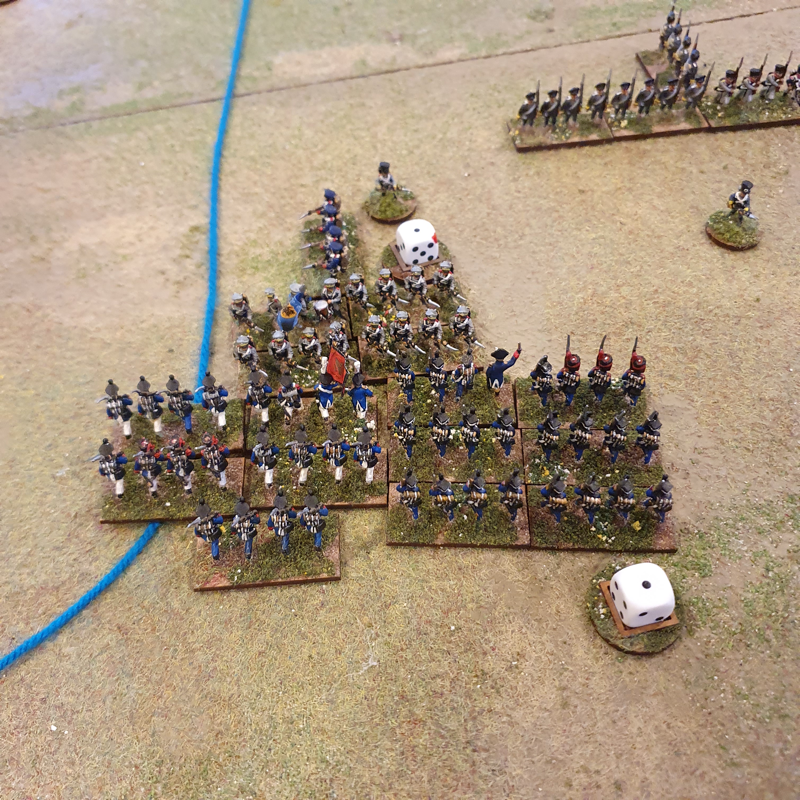

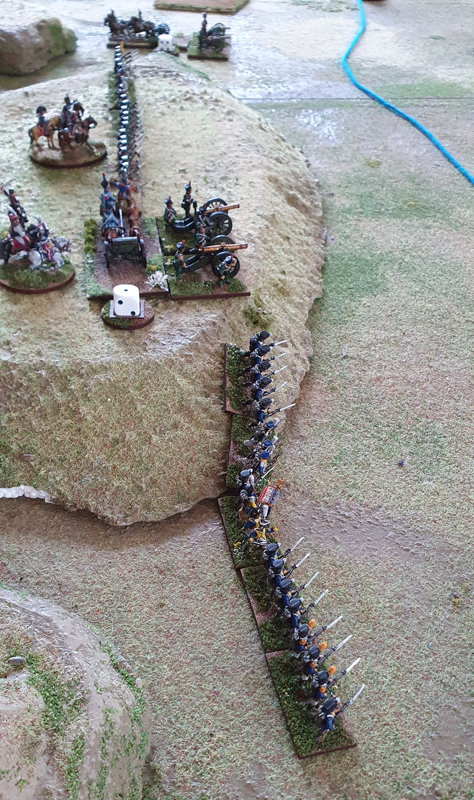
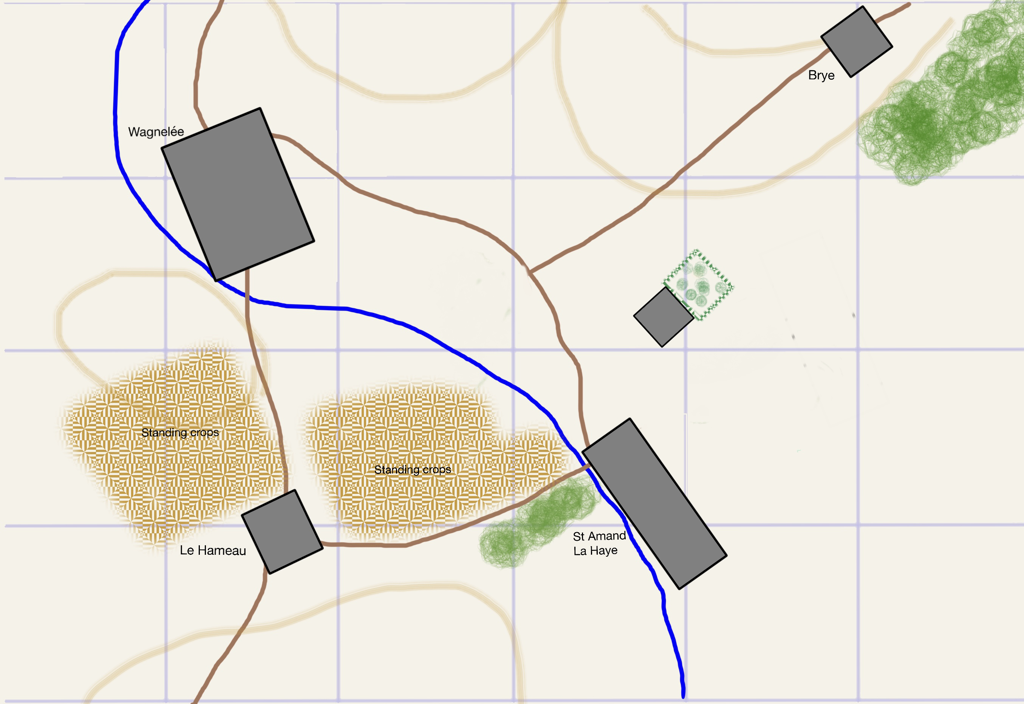


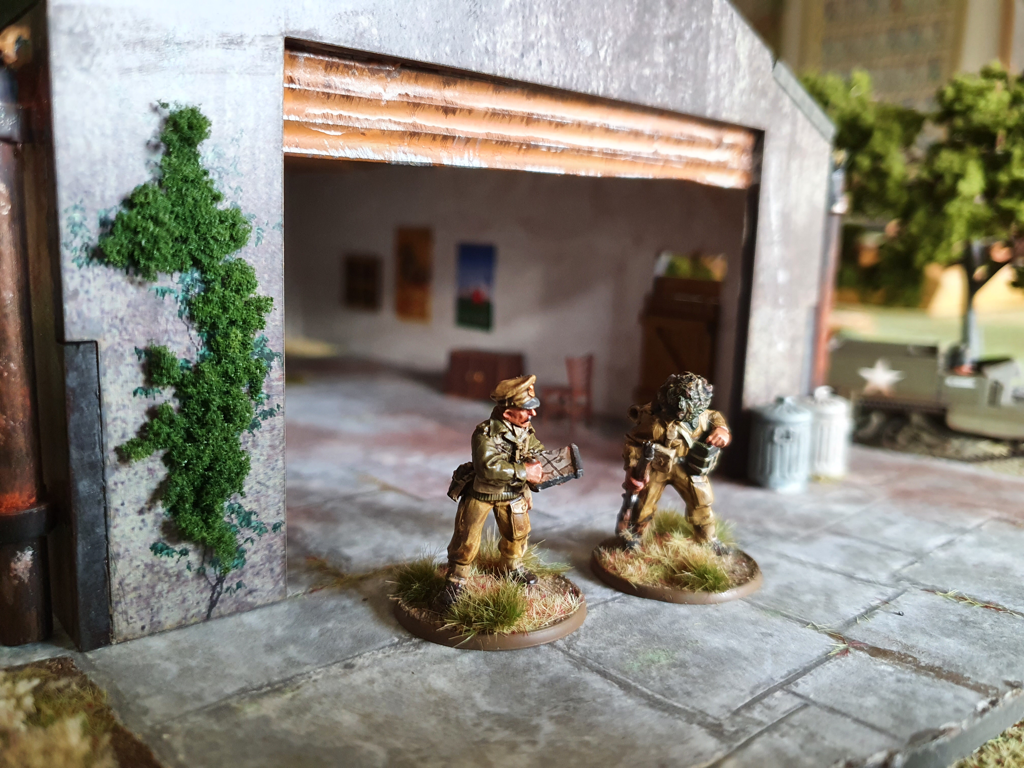
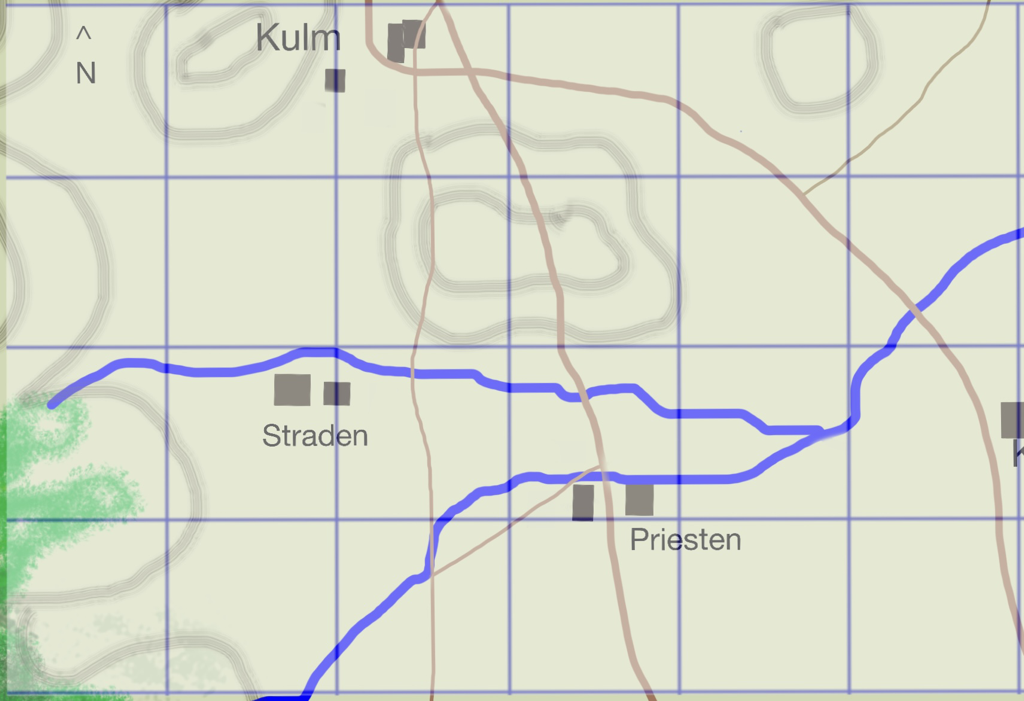
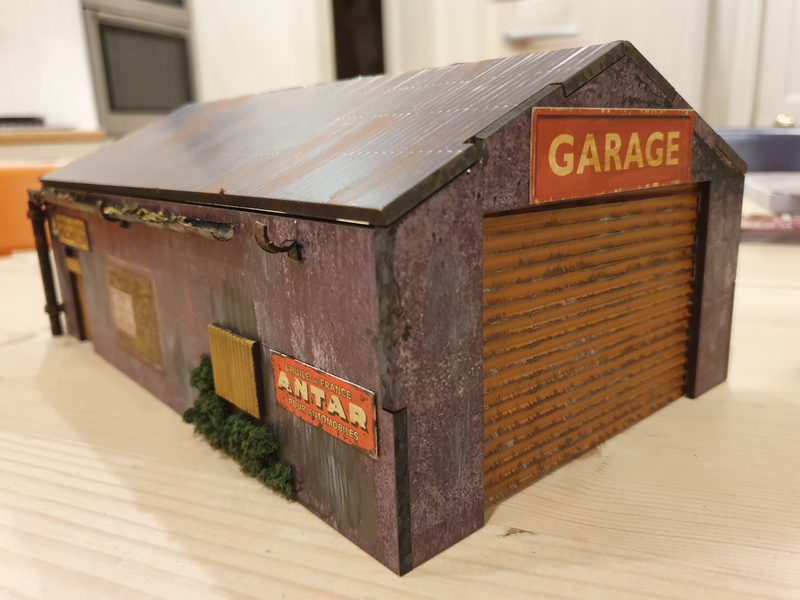





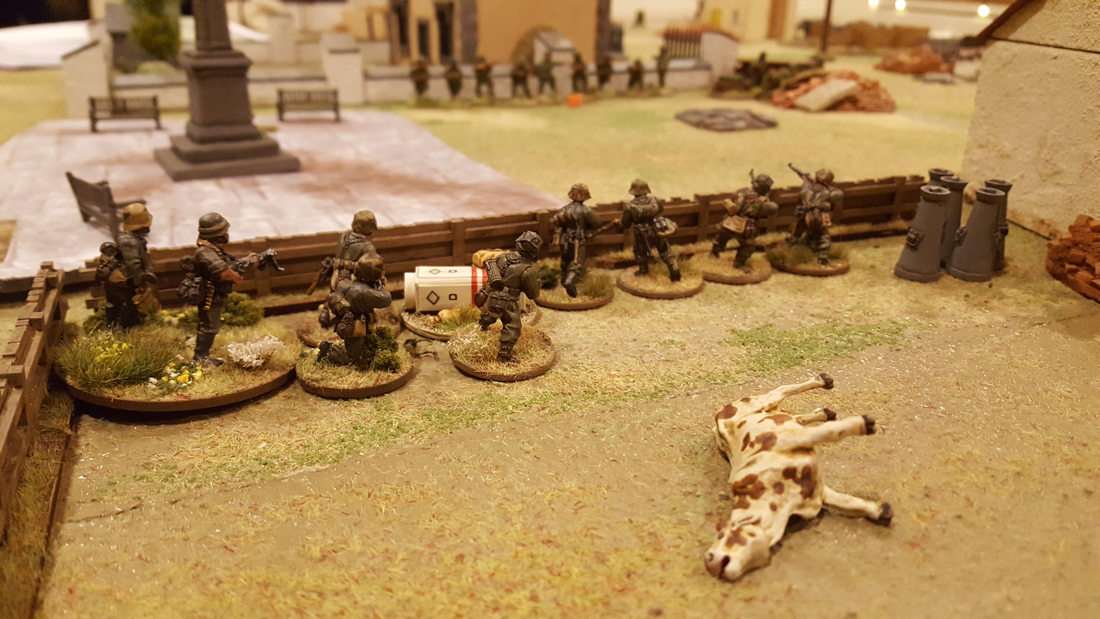
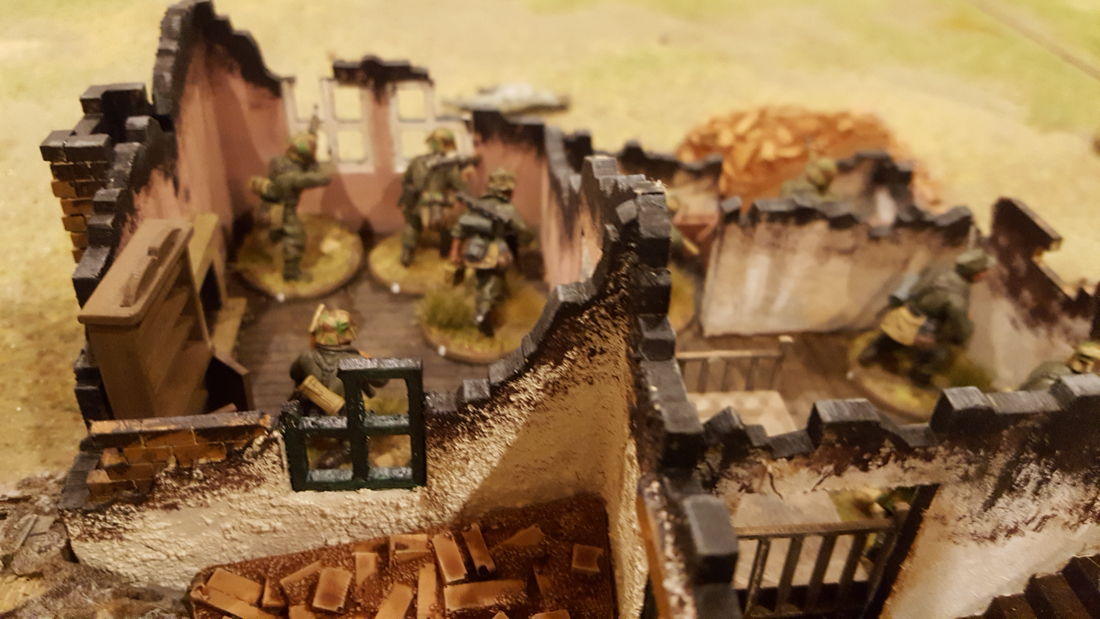

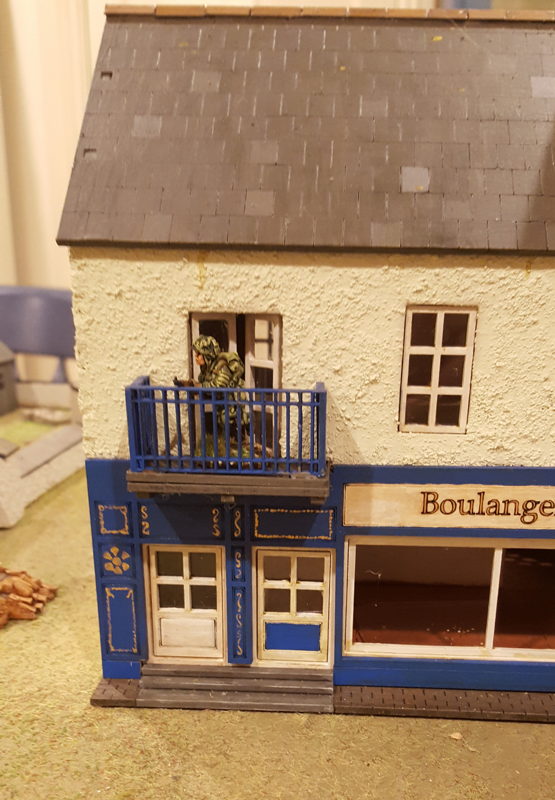

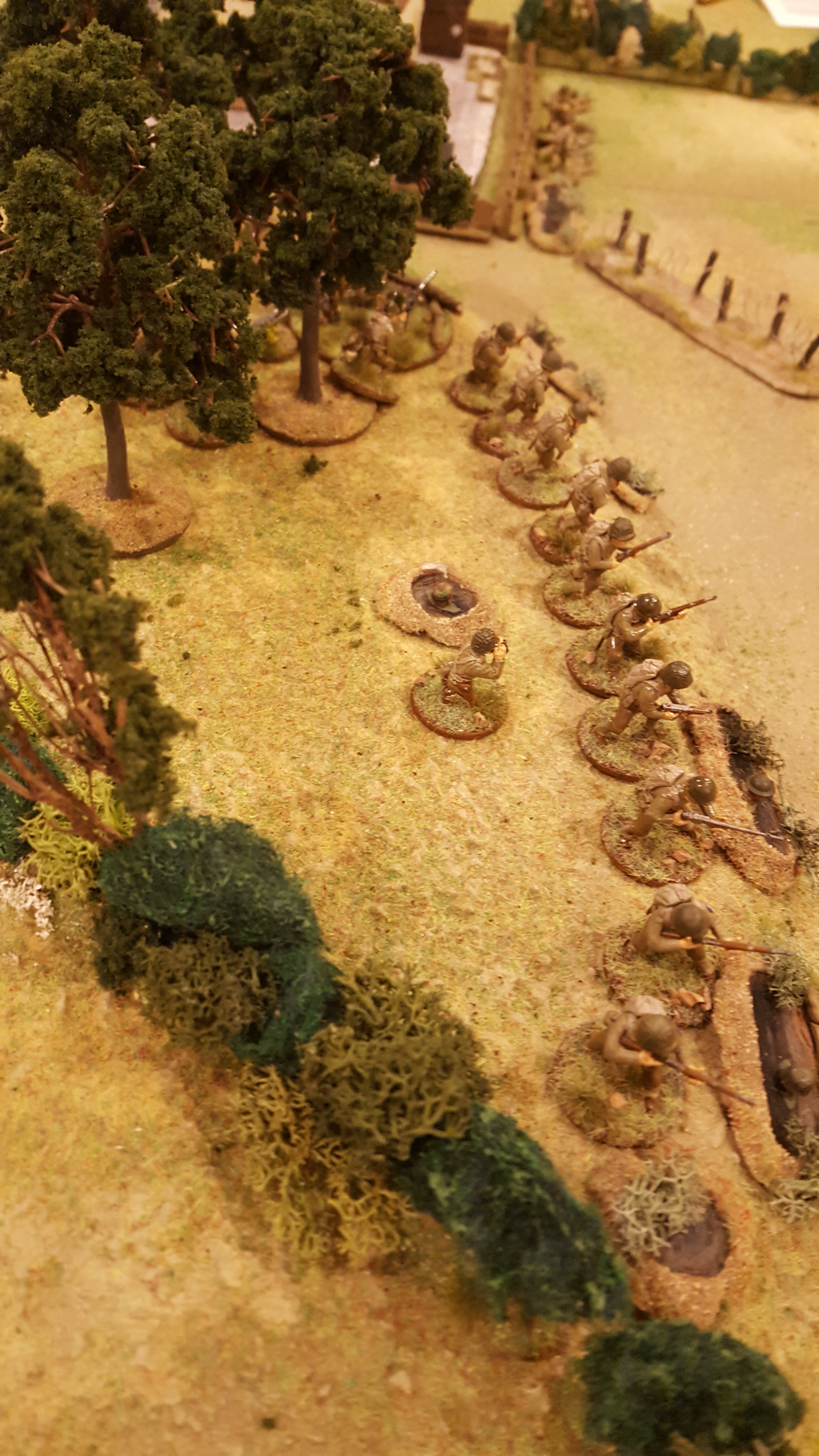

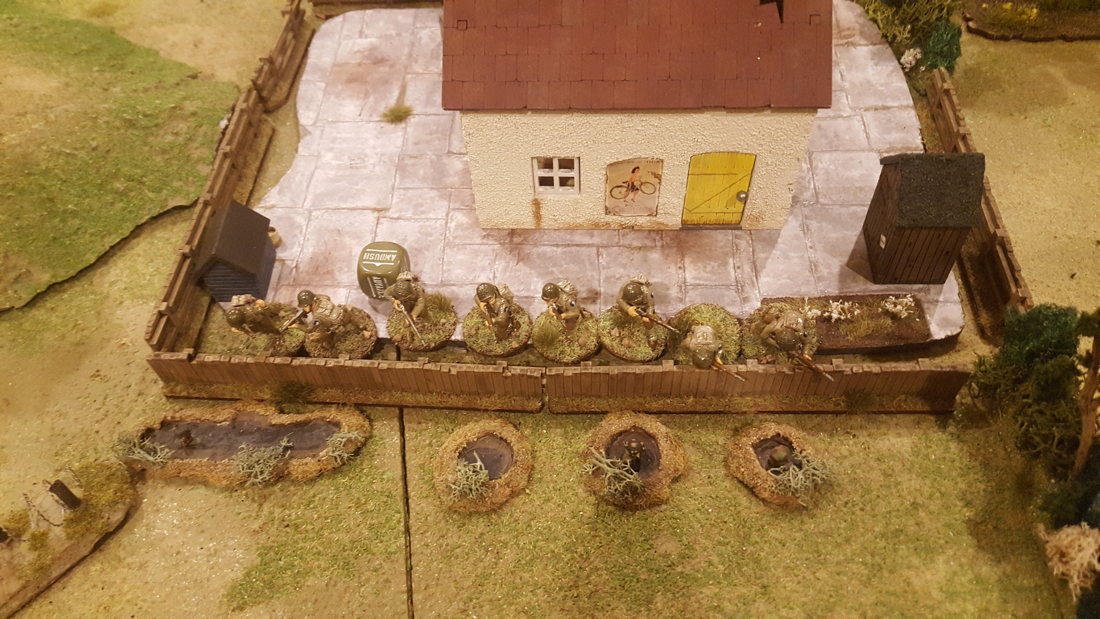
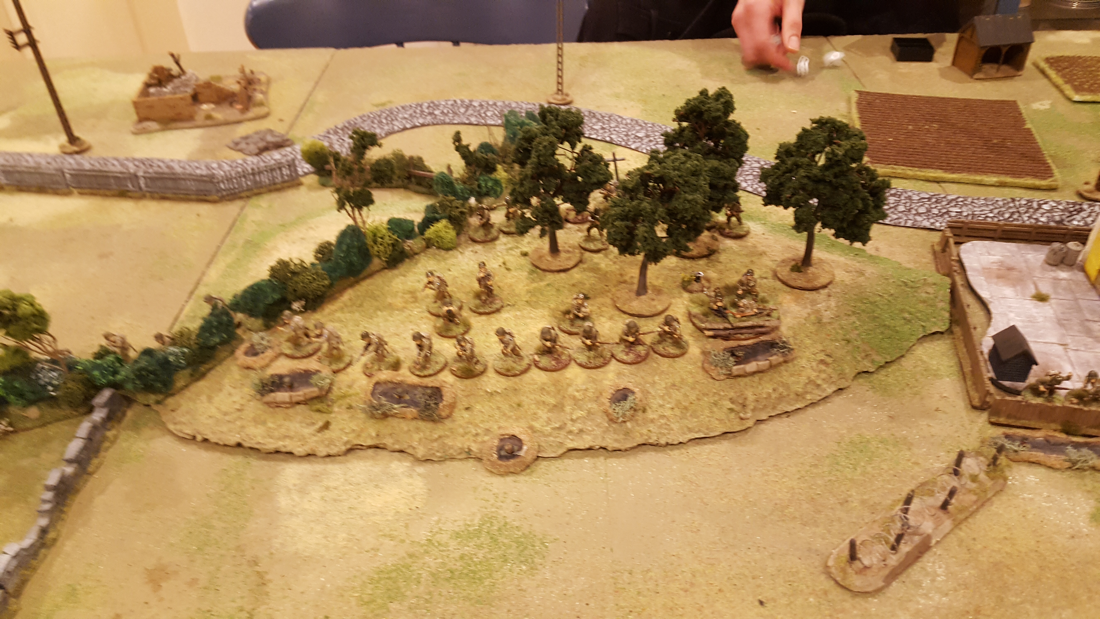




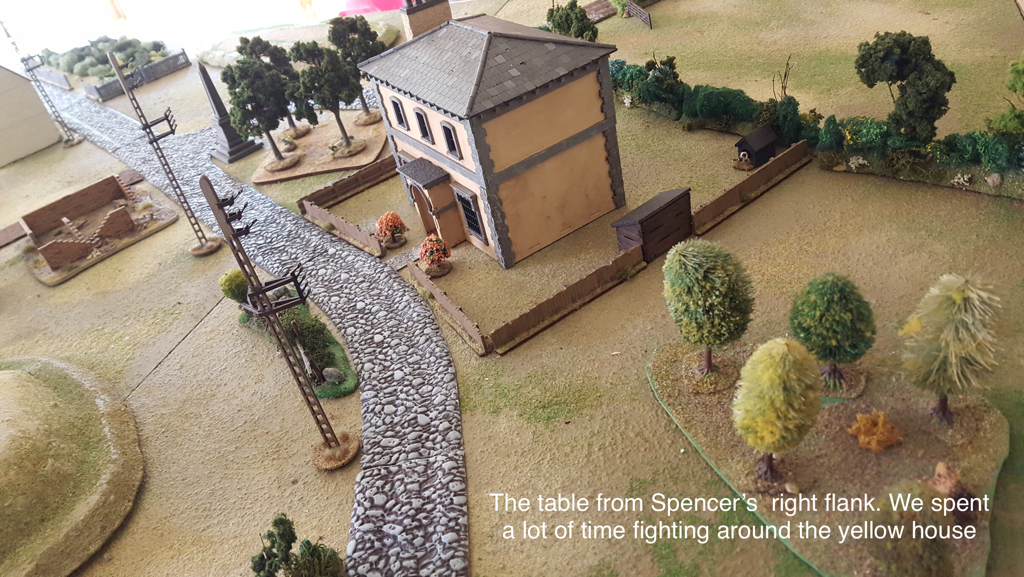
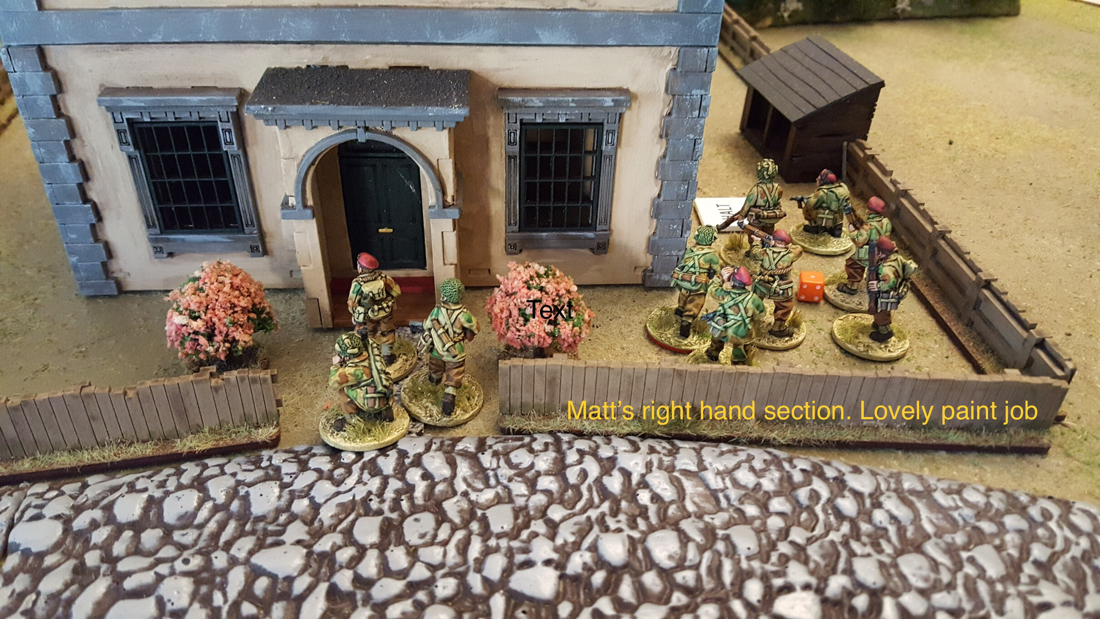

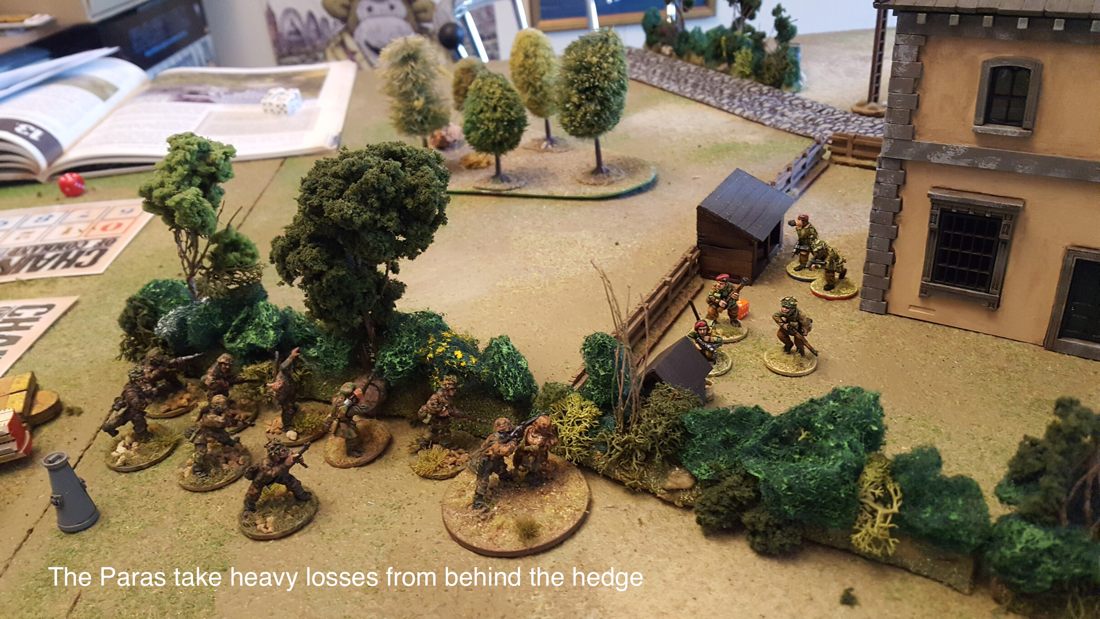

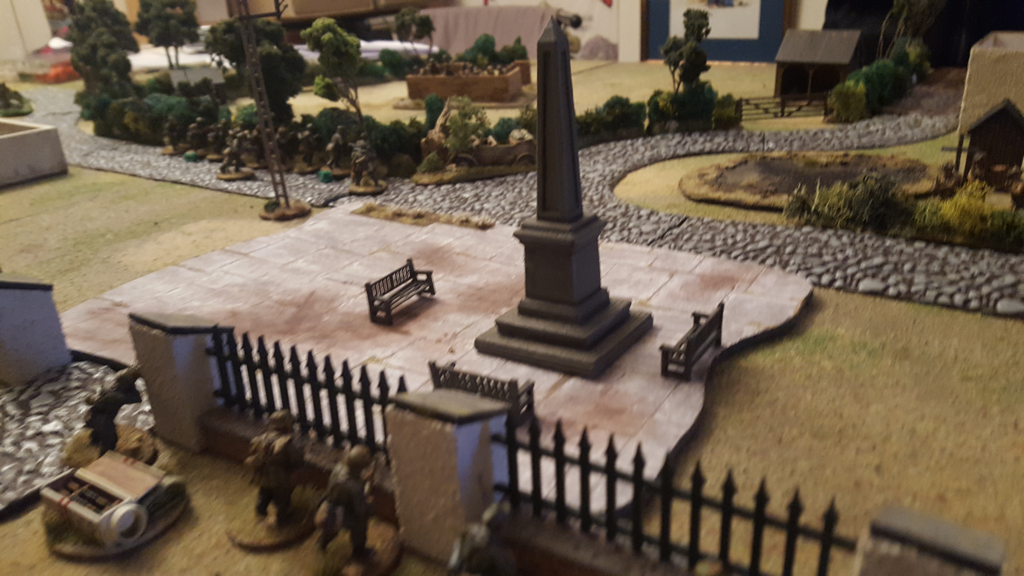

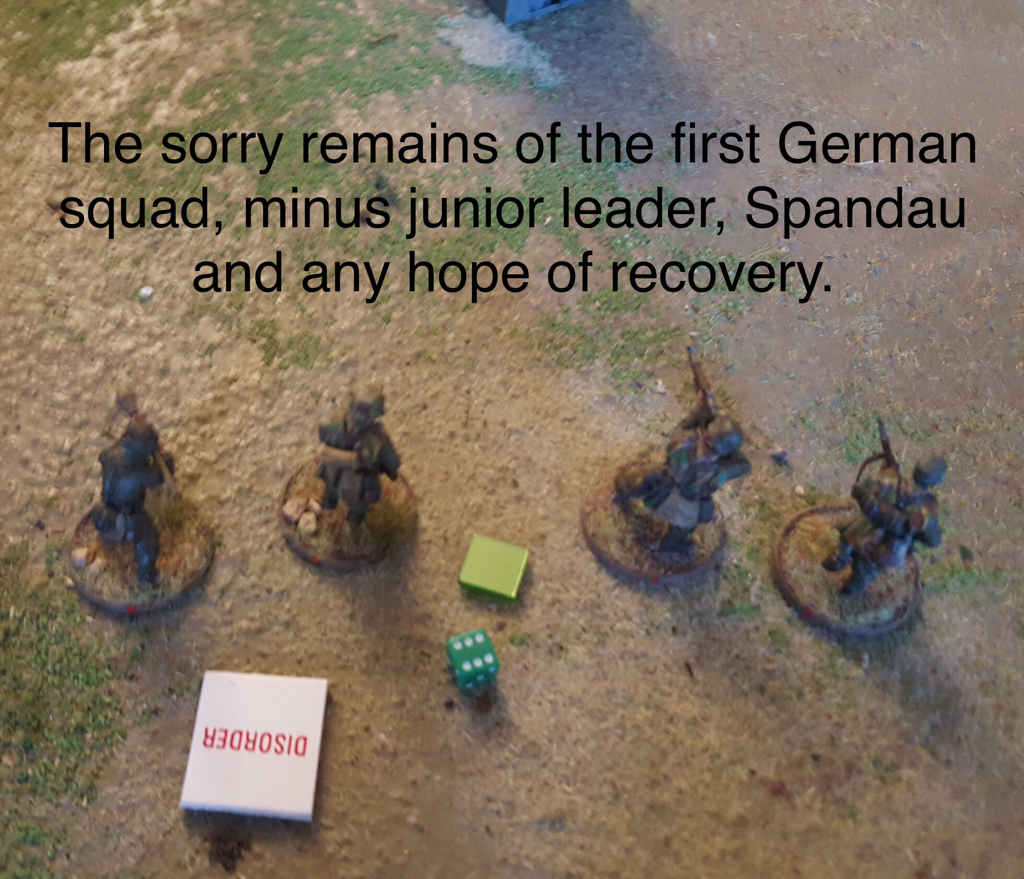

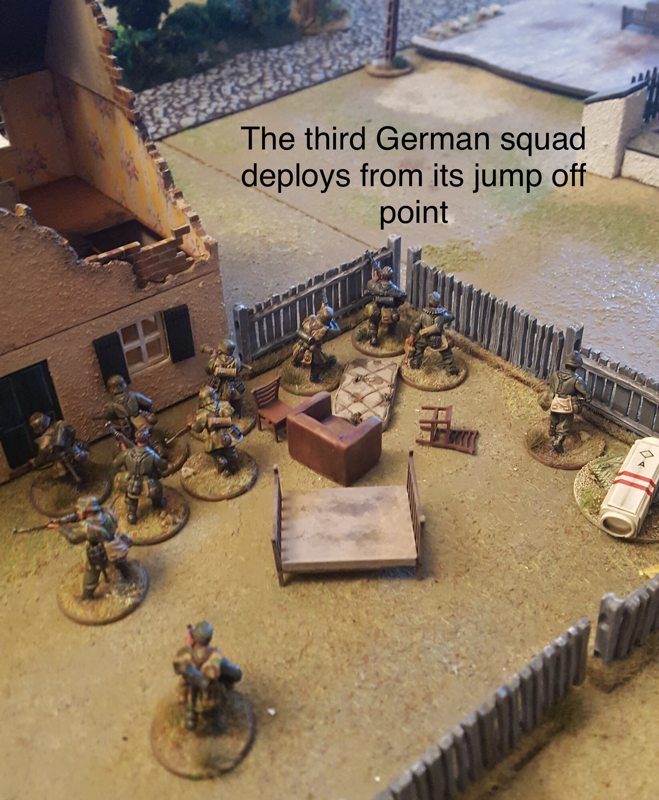


 RSS Feed
RSS Feed